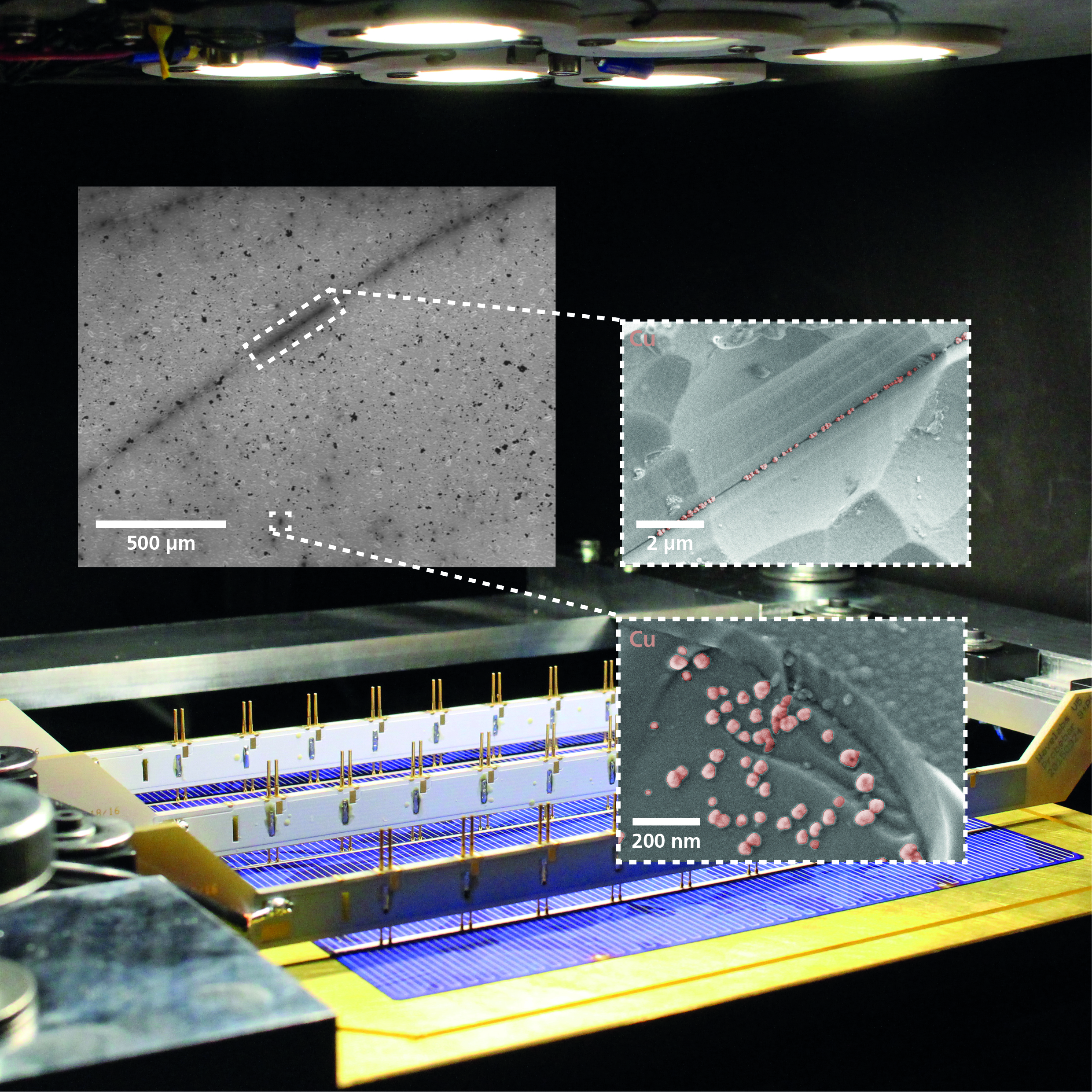
Light exposure of multi-crystalline PERC solar cells may lead to a severe efficiency loss up to 20 %rel. induced by carrier injection. This solar cell degradation is known as mc-LID (or sometimes LeTID). Luka et al. present latest results on the root cause analysis of mc-LID in the february issue of Rapid Research Letters. These results are based on a systematic study of solar cells under illumination and elevated temperatures using an advanced LED-based light soaking test bench with precise temperature control (see image).
Going into the local appearance of mc-LID, areas with strong back surface recombination could be detected using high-resolution light-beam induced current mappings from a novel correlative Laser Scanning Microscopy setup. Target preparation and element analysis unveil Cu-containing precipitates at the rear side of solar cells correlated to regions with high carrier recombination. These precipitates accumulate at grain boundaries and at the rear surface where the passivation stack is damaged. Subsequent TEM preparations indicate that the Cu originates from the cell material. Since Cu is known to cause LID and significantly reduce the solar cell efficiency, the unexpected large amount of Cu indicates that Cu might be related to mc-LID.
 Fraunhofer Center for Silicon Photovoltaics CSP
Fraunhofer Center for Silicon Photovoltaics CSP